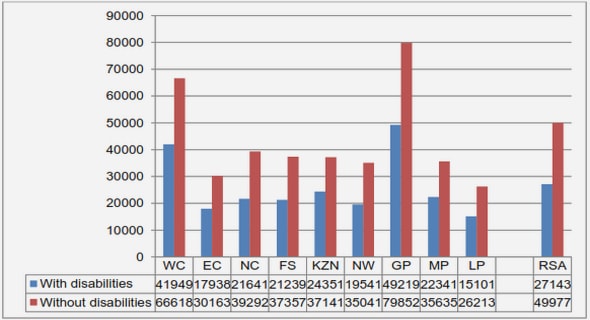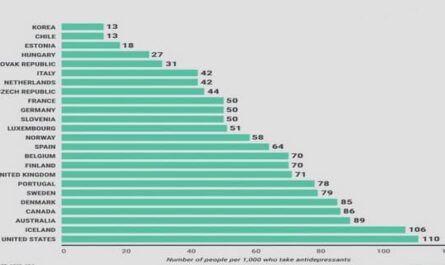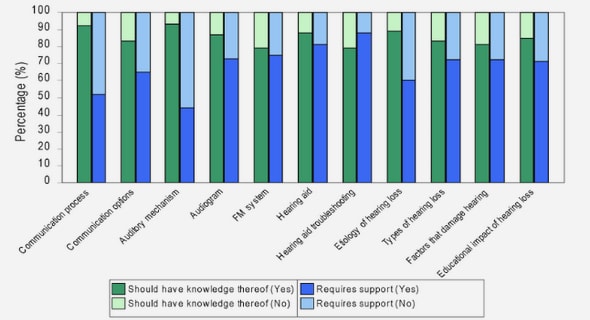Get Complete Project Material File(s) Now! »
Neural Correlates of PTSD
This section will provide an overview of the neural structures primarily affected by PTSD. Neural models of PTSD are mainly based on two different assumptions about brain functioning. There is the “traditional” neurocircuitry model of PTSD, which emphasizes medial-temporal and medial prefrontal regions in the pathophysiology of PTSD, and then there is the more recent triple-network model of psychopathology (Patel, Spreng, Shin, & Girard, 2012). This latter model is based on the assumption that PTSD, as most other psychiatric conditions, arises from dysfunctions in three core brain networks: the default network, the frontoparietal central executive network, and the salience network. These three networks deal with different types of processing, but interact dynamically in an active brain. Self-referential thinking, such as autobiographical memory is associated with activity in the default network, while the central executive network deals with attention and working memory.
The salience network is thought to deal with autonomic functions and emotions, but also conflict monitoring and reward-processing. The co-dependent manner in which these networks interact means that disturbances in one part of the network will affect the others as well: This could explain diverse symptomology in disorders such as PTSD (Patel et al., 2012) This view enables the inclusion of abnormal activation patterns in areas of the parietal cortex, precuneus, anterior insula, and the dorsal anterior cingulate cortex (dACC). Abnormal readings in these areas in PTSD patients were not explained with the traditional neurocircuitry model (Patel et al., 2012).
Accepted Treatments for PTSD
Many different forms of treatment have been devised for PTSD, ranging from pharmacological interventions and psychotherapy to newer techniques such as Virtual Reality and ancient ones such as yoga, just to name a few (Cukor et al., 2009). The best treatment so far is considered to be a form of Cognitive Behavioural Therapy (CBT) called exposure therapy (Cukor et al., 2009). Exposure therapy aims to desensitize the heightened emotional arousal, and is the most common treatment for PTSD (Cukor et al., 2009; Pitman et al., 2012).
Extinction learning, the key concept in exposure therapy, is a process involving re-exposure to the trauma or anxiety triggers in safe context; thereby recreating the painful memory with altered emotional content, until the memory or trigger no longer elicits an anxious response (Myers & Davis, 2006). The idea is to re-experience the trauma in this safe environment until the memory is habituated enough for resolving the PTSD (Charuvastra & Cloitre, 2008). A difficulty for this method to work on PTSD is that extinction learning is thought to be deficient in PTSD-patients. Hence one aim of exposure therapy is to re-establish normal functioning of this system. Earlier theories of exposure therapy believed that the fear-conditioned response was unlearned and replaced by the altered reaction. Later theories however acknowledge that the original coupling (stimuli-fear) is still present, just weakened by the inhibitions of the new associations.
These are however context-dependent; so if the fear is successfully abolished in one setting, for example the laboratory, the fear still has a strong risk of returning in other situations (McNally, 2007). In order for CBT to be effective in treating PTSD, the therapeutic alliance must be strong, and the patient must feel safe enough to bring forward memories of the trauma. Not only does the patient need to feel safe, but emotional engagement is also essential (Jaycox, Foa & Morral, 1998). Since emotional numbing is one of the major symptoms of PTSD, this can be hard to achieve. Even though CBT has been very successful in treating many anxiety disorders it only demonstrates modest success in treating PTSD (McNally, 2007). Exposure therapy interventions are effective in about one third of the patients, but also have high dropout rates (Cloitre, 2009).
Pharmacological interventions, besides acute administration of benzodiazepines (sedatives), have so far been restricted to treatment of symptoms with SSRIs – but in studies no clinical effect has been seen (Cukor et al., 2009). Furthermore there is an on-going debate concerning if SSRI is more effective than placebo even in treating its original application, depression (e.g., Fournier et al., 2010; Kirsch et al., 2008). Even though SSRIs are considered safe, and do alleviate some symptoms in a portion of patients with PTSD; there are also undesired side effects (e.g., loss of sex drive, weight changes, gastrointestinal effects), as well as the problem of slow onset of action. Improvement in symptoms is usually not noticeable until at least 3 weeks after initiation of medication (Nutt et al., 1999; Steckler & Risbrough, 2012). This is especially problematic in treating PTSD because of the high suicide rate – for a suicidal patient 3 weeks might simply be too long. Another downside to medicating PTSD patients with SSRIs and benzodiazepines is that these pharmacological agents can interfere with the process of extinction learning (Johansen & Krebs, 2009).
History of MDMA
MDMA was invented in the late 1800’s, but was not patented until 1914 in Germany by the chemical company E. Merck as an intermediate chemical in the synthesis of hydrastisin, an anti-bleeding drug (Holland, 2001a). MDMA was then forgotten until the early 1950s when the U.S. army researched it for its potential use in brainwashing (Holland, 2001a). Only animal experiments were conducted at this time (Holland, 2001a). In the 1970s it was rediscovered and synthesized by the chemist Shulgin. Shulgin and Nichols (1978) were also the first to publish the human psychopharmacology of MDMA (Greer & Tolbert, 1986). Shulgin introduced the drug to friends and co-workers, among them therapists. Encountering the substance in this way led some of them to begin working with the chemical for clinical purposes (Holland, 2001a). One of those therapists was Zeff, who had previously worked with psychedelic therapy using LSD in the 1950s and 1960s (Sessa, 2007). Zeff came out of retirement to work with this novelty that many therapists found to be a powerful tool for psychotherapy. Thousands of patients were supposedly treated with MDMA, but no double-blind, placebo-controlled studies on the therapeutic effects were conducted during this time. Therefore the evidence of its therapeutic potential from pre-regulation times is to be regarded as anecdotal (Holland, 2001a).
In the 1980s MDMA found its way to the general public, and its use for recreational purposes became widespread. In the US this meant that despite having been used as a therapeutic tool for over a decade, MDMA was emergency classified as a schedule 1 controlled substance in 1985 (Holland, 2001a). Schedule 1 means that the substance is considered as having a highly addictive potential and no medical applications. Therapists now had to abandon MDMA as it was banned (Sessa, 2007), even though many opposed this classification (Holland, 2001b). In a hearing of May 22, 1986 Judge Francis Young recommended classification into Schedule 3, which would enable physicians to prescribe MDMA and research to continue (Young, “Opinion and recommended ruling”, 1986). The DEA overruled and placed it in Schedule 1 (Holland, 2001b). Following recommendations from the United Nations and the World Health Organisation, MDMA was classified throughout most of the world during the 1970 – 1990’s. Notable exceptions are Switzerland, which allows use of MDMA for research purposes or therapy after special permission (Holland, 2001b); and Portugal, which decriminalized use and personal possession of all psychoactive substances in 2000 (Moreira, Hughes, Costa Storti, & Zobel, 2011).
Research on MDMA in the subsequent years focused on animal studies. These experiments mainly concluded that MDMA is neurotoxic, especially in high doses taken frequently (Holland, 2001a). In Switzerland there was a brief period, 1988 – 1993, when some therapists were allowed to continue using MDMA for therapeutic purposes. A follow-up study concluded that the vast majority of patients reported positive experiences, and improvement in their well-being and quality of life (Sessa, 2007), which is conclusive with the anecdotal reports from pre-regulation therapeutic use.
In 1992 Grob was allowed by the FDA to conduct human studies of MDMA, on experienced Ecstasy-users. Since then small studies on recreational Ecstasy-users have been allowed in the U.S. Studies have also been conducted in Switzerland, which traditionally has been slightly more open towards research on psychedelics. In 1999 the nonprofit organisation Multi-Disciplinary Association For Psychedelic Studies (MAPS) held a conference in Israel on MDMA (Holland, 2001a), and in 2000 the first controlled study of MDMA-assisted psychotherapy for PTSD was initiated in Spain (Doblin, 2002). Until then no documented studies on therapeutic effects of MDMA seem to have been conducted (Iversen, 2006).
Contemporary Treatment of PTSD with MDMA
The description of the acute and subacute effects of MDMA in the previous section may give indications as to why PTSD was the first disorder chosen for MDMA-assisted psychotherapy trials. The first double-blind phase-two clinical study on MDMA-assisted psychotherapy for PTSD was initiated in Spain in 2000 (Doblin, 2002). 29 women with persistent PTSD were enrolled in this study, but because of media and political pressure the study was discontinued after treatment of 6 subjects. Thus the sample size was too small to generate significant findings, but no adverse psychological effects were noted and all 6 subjects reported increased well-being. The study was randomized to contain three experimental sessions, one with a low dose of MDMA, one with a higher dose and one placebo condition (Bouso et al., 2008).
Session outline
Mithoefer et al. (2013) outlined a plan for conducting MDMA-assisted psychotherapy, which will be summarized in the following section. All participants were prepared in two sessions before receiving MDMA-assisted therapy. The MDMA-sessions took place in a group psychotherapy room at a clinic, with two therapists present during all sessions, one male and one female. During the experience subjects were encouraged to lie down comfortably with eyes closed and focusing inward, while listening to pre-selected music. The therapists remained with the subject for the entirety of the session, but discussions were only conducted as need arose. It is specified in the manual that the sessions be conducted in a nondirective approach. The subjects are supposed to steer the experience themselves, albeit with help from the therapists, an approach that so far has yielded results (Mithoefer et al., 2011; Oehen et al., 2012) In all MDMA-sessions conducted by Mithoefer et al., the participants’ trauma emerged without the therapists bringing it up. Although sexual contact is of course strictly forbidden, and this is included in the consent form; supportive physical contact, for example hand holding, is encouraged if instigated by the subject. After the session the participant stayed the night at the clinic in the company of a preselected companion (e.g., spouse).
Integrative therapy sessions were conducted the morning after the MDMA-session, 1 week after and 2 weeks after. During the first week after treatment all participants were contacted by phone each day. In total subjects received two or three MDMA-assisted and 12 sessions of (non-drug) psychotherapy, with extra (non-drug) sessions available to those in need. 2 months after completion of the second session a final integration therapy session was conducted (Mithoefer et al., 2013). This plan was followed in both Mithoefer et al.’s (2011) and Oehen et al.’s (2012) studies, which are described in the next sections.
U.S.
The second study, also double-blind phase two, was conducted in the U.S. by Mithoefer et al. (2011). 20 subjects partook in the study, all with treatment-resistant PTSD and a score of at least 50 (moderate to severe symptoms) on the Clinician Administered PTSD Scale (CAPS). The average duration of PTSD was 19 years, during which all subjects had undergone multiple medication trials, with selective serotonin re-uptake inhibitors (SSRI) or serotonin-norepinephrine re-uptake inhibitors (SNRI), as well as at least 6 months of psychotherapy (Mithoefer et al., 2011).
Medical history, physical examinations, and tests for example for blood count and HIV, as well as electrocardiograms (ECG) were administered, and all participants submitted negative drug screens. Psychological and neurocognitive tests were performed after enrolment, four days after each session, and 2 months after the second experimental session. The groups did not differ significantly at any of these tests neither at baseline nor at the 2-month follow-up (Mithoefer et al., 2011). The sessions followed the method outlined above, with two MDMA-assisted sessions 3-5 weeks apart, with weekly non-drug therapy sessions in between. Participants ingested 125 mg of MDMA or placebo (lactose) in a capsule taken orally. In most of the sessions a second supplemental dose of 62.5 mg MDMA was given 2-2.5 h after the first dose. No medical complications were reported and no serious adverse effects occurred (Mithoefer et al., 2011).
Mithoefer et al. (2011) defined clinical response as at least a 30% decrease from baseline CAPS. After Stage 1 83.3% (10/12) of the MDMA group and 25% (2/8) in the placebo group met criteria for clinical response; 10/12 in the MDMA group, and 2/8 in the placebo group, no longer met DSM-IV criteria for PTSD. After Stage 2 the clinical response rate was 100%. All subjects of the MDMA group that were unable to work due to their severe PTSD symptoms were able to return to work after completion of the study. Improvement was not limited to PTSD-symptoms; the majority of participants also reported increased self-awareness, improved relationships, enhanced spiritual life, increased involvement in the community, and generally increased quality of life (Mithoefer et al., 2011).
Mithoefer et al. (2012) performed a long-term follow-up study 2-5 years (mean 3.5 years) after the original study. All 20 subjects from the original study participated in this follow-up. Results from this follow-up study show no statistical differences in CAPS scores between the 2-month follow-up and the 2-year follow-up. All participants reported benefits from partaking in the study and no one felt they were harmed in any way by participating. At enrolment, 84% of participants were undergoing psychotherapy; at the 2-year follow-up 42% were in active psychotherapy. The rate of participants under psychiatric medication remained the same, 58%, but mean number of medicines taken decreased from 1.7 to 1.3. No new illicit substance use was reported, although rates of incidental cannabis use remained the same as at the time of enrolment (Mithoefer et al., 2012).
Table of contents :
Abstract
PTSD
Neural Correlates of PTSD
Accepted Treatments for PTSD
MDMA
History of MDMA
Acute Effects
Aftereffects
Does MDMA Heighten Empathy?
Contemporary Treatment of PTSD with MDMA
Session outline
U.S.
Switzerland
Unfinished studies
Neurobiological Rationale for Treating PTSD with MDMA
Neurotransmitters
Regulation of Activity
Hormones
Discussion
Neurotoxicity and Adverse Psychological Effects
Implications From Contemporary Studies
Conclusion


